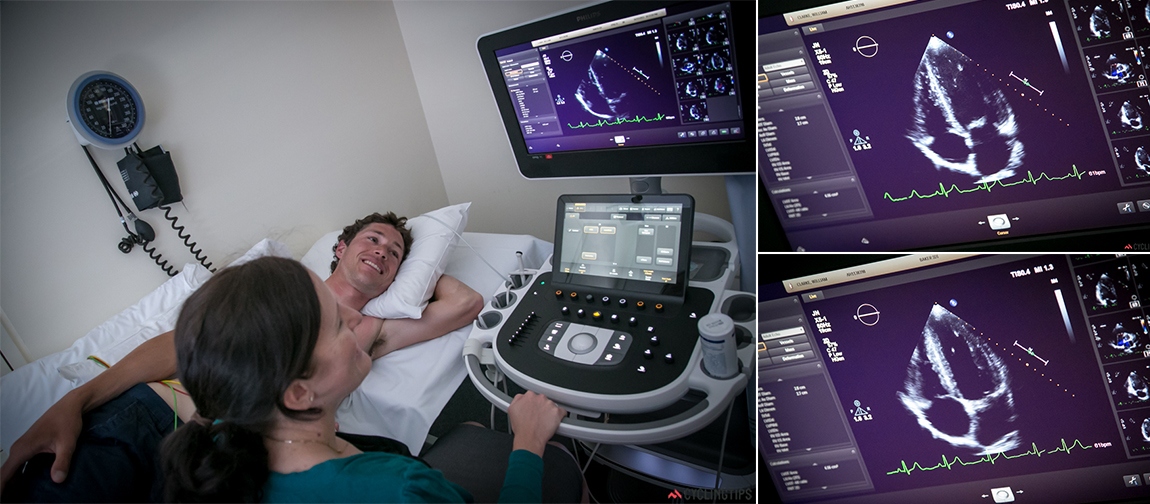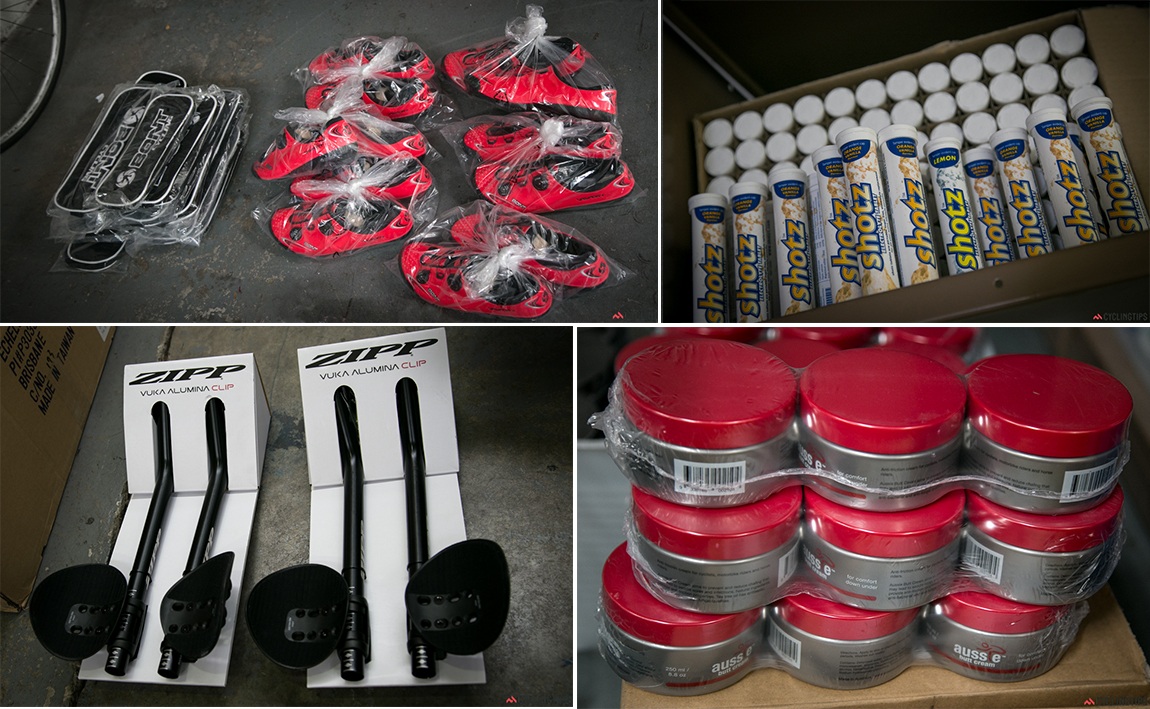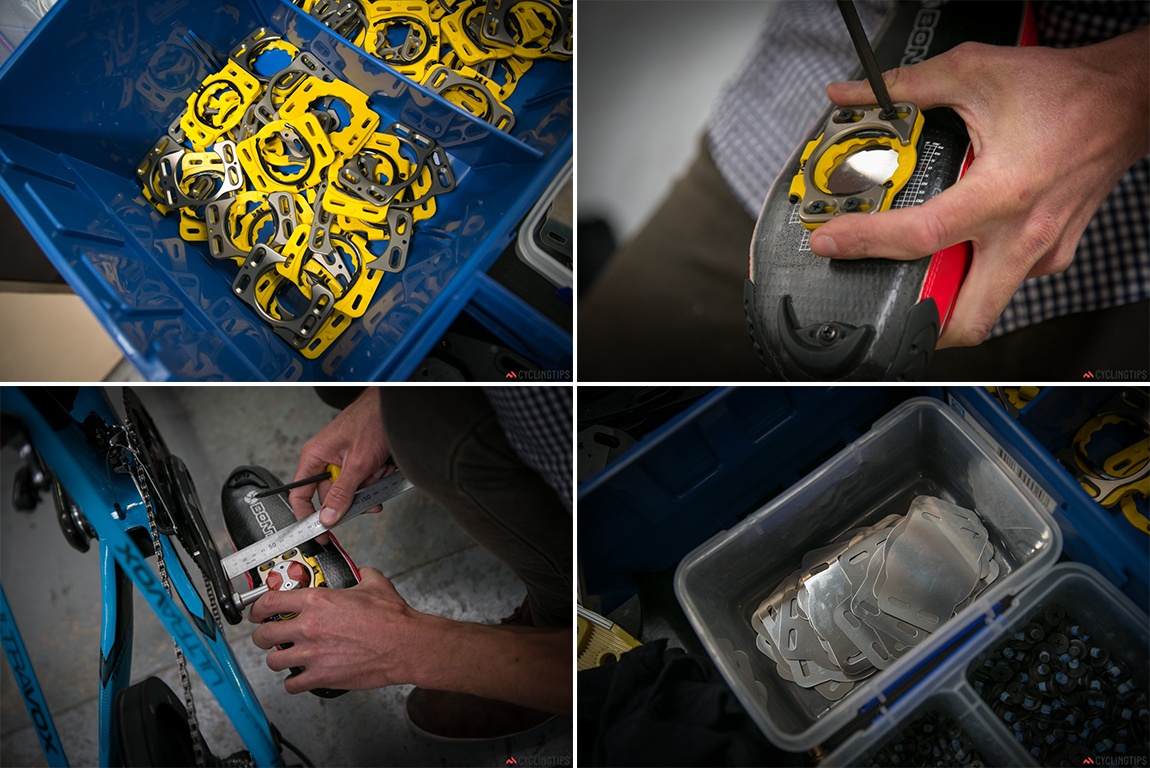The long road
Like any big project, the process of getting your team promoted from Continental status to ProContinental is far from quick and far from easy. The team made the decision to apply for a ProConti license back in April 2013 and after a period of back-and-forth with the UCI, the first official document was turned in on the first of August.
While making the jump from ProContinental to ProTeam (the highest UCI ranking, as held by the likes of Orica-GreenEDGE, Team Sky etc.) is an extremely involved process, Drapac Team Manager Jonathan Breekveldt believes that the jump from Continental to ProContinental, as done by Drapac, is even more arduous.
In addition to a mountain of paperwork that needs to be completed, applying for a UCI ProConti license requires a bank guarantee worth, at an absolute minimum, 300,000 Swiss Francs ($370,000 AUD). In the case of Drapac, this bank guarantee is in excess of $500,000 AUD.
As Jonathan Breekveldt explained to CyclingTips in late December, this bank guarantee goes hand-in-hand with a significant increase in the team’s costs.
“The budget growth is massive because we [need to] have a minimum of 16 riders on a minimum wage. If you’re a neo-pro it’s €25,300 ($38,600 AUD). If you’re pro it’s €30,250 ($46,200 AUD). And we need a minimum of eight full-time staff. So we already have 24 full-time people.
“We’ve gone from 16 people [in 2013], including staff, to 27. So that’s a big jump. We go to our training camp now and it’s not 12-13 guys there, it’s 30. Everything’s bigger — the budget’s tripled.”
Among the biggest recruits to Drapac for 2014 are former WorldTour riders Jonathan Cantwell (Saxo-Tinkoff), Wesley Sulzberger and Travis Meyer (Orica-GreenEDGE) and Will Clarke (Argos-Shimano), not to mention a selection of other exciting talents like Jack Anderson (Budget Forklifts) and Lachlan Norris, the latter of whom returns to Drapac after a stint with Team Raleigh in the UK.
Among the staff to join Drapac in 2014 are two mechanics from the Dutch Vacansoleil-DCM squad which met its untimely end at the end of the 2013 season due to a lack of sponsorship dollars. Jane Aubrey, former editor of Cycling News Australia, also joins the team as chief communications officer.
Keith Flory comes to Drapac as performance director after a four-year stint in the UCI’s World Cycling Centre and will act as a conduit between each of the riders, their coaches and the team, monitoring riders’ performance and ensuring they’re on track.
The team is also working closely with renowned physiotherapist Victor Popov who is best known for his work with Robbie McEwen and on the Australian Olympic team for the Atlanta and Sydney Games in 1996 and 2000 respectively.
Health and wellbeing
Among the UCI requirements for a team operating under a ProContinental license are a series of mandated health checks. Riders undergo pre-season testing — including blood tests and basic physical testing — to ensure they have no underlying health issues that racing could exacerbate.
One of these check-ups is a heart ultrasound which is used to check the size of the rider’s heart and to ensure all of the valves in the heart are opening and closing properly. The rider’s heart is also checked for any leaks.

Drapac recruit Will Clarke gets a heart ultrasound at the Alfred Hospital in Melbourne. The two images on the right might look the same but the top image shows the valves in his heart open, while the bottom image shows them in the process of closing (note the thin white line between the upper and lower chambers on the left side of his heart in the bottom image).
When a team makes the step up to the ProContinental ranks, all riders on that team must also take part in the UCI’s biological passport program.
In practical terms this means getting all riders on the team to do three baseline tests which are then used to create a biological profile of the rider. After that, drug testing (administered by ASADA in the case of Australian riders) happens at random times throughout the year. (After finishing 20th in his nationals ITT yesterday Drapac rider Lachlan Norris was stopped by an ASADA official and asked to provide a urine sample).
Subscribing to the biological passport program costs Drapac €80,000 ($122,000 AUD) and while team manager Jonathan Breekveldt has no doubt it’s an important part of the step up, he suggests there are some flaws with the system.
“I’d push — not just because we’ve made the step up — for any UCI-registered team to have the passport. It’s a little bit unfair — and the WorldTour teams would echo this — that there are teams in the same race with different testing procedures. We’ve seen races in the past where small teams have made WorldTour teams look quite silly and a lot of people ask questions.”
Fits and checks
In addition to the upgrades mandated by the UCI, Drapac has used its promotion to the Professional Continental ranks as an opportunity to do things a little more, well, professionally. In mid December all riders headed to the Drapac service course in the northern Melbourne suburb of Fawkner to get a bike fit.

Bike fit expert and clinical myotherapist Ken Ballhause sets up Robbie Hucker’s bike according to measurements from the rider’s old bike. Ken told us that in setting up the new bike there are four main measurements he’s interested in: Saddle offset (the position of the seat relative to the bottom bracket), saddle height (distance from the seat to the centre of bottom bracket), the distance from the saddle to the centre of the handlebars (the centre of the saddle is measured by taking a 70m cross-section based on the distance between an average rider’s sitbones) and bar drop (the distance between a horizontal line from the saddle to handlebar and the handlebars themselves).
With the team changing bike sponsors from Giant to SwiftCarbon in 2014, not to mention a change to Bont Shoes, Speedplay pedals and Fi’zi:k saddles, it’s important that the riders are comfortable with their new setup long before it comes time to race. For several members of the team it was the first professional bike fit they’d ever had done.
Before attending their bike fit session each of the riders sent in measurements from their existing bike which bike fitting expert and clinical myotherapist Ken Ballhause then used to set up the rider’s new bike.
At the service course a few tweaks and alterations were made to ensure each rider was comfortable on their bike. White adhesive dots were then placed on the rider’s joints and they were each asked to ride at their functional threshold power for roughly 30 seconds.
This 30-second effort was captured on video which, with the aid of post-processing, allows Ken and sports scientist Kate Perry to calculate the rider’s joint angles at various points throughout their pedal stroke.
These values can then be compared against optimal values — according to the latest scientific literature — and Ken and Kate can suggest changes to the rider’s setup.

Adhesive dots are placed on Robbie Hucker’s joints before he is filmed riding at his functional threshold power for 30 seconds. This video footage is post-processed to allow the tracking of joint angles throughout Hucker’s pedalstroke, with the team able to suggest any changes to Hucker’s position that might bring his joint angles into line with recommended values (if they aren’t already).
During their visit to the service course in Fawkner the riders also took part in a brief functional testing session. Kate filmed each of the riders as they performed a series of exercises to test core strength and mobility.
She then prescribes a tailored exercise regime to each of the riders, to ensure they are working on any weaknesses and improving their fitness and conditioning across the board.
The road ahead
At the Drapac service course the riders all receive their new training bike, a SwiftCarbon Ultravox Ti with light blue finish. After a week or so spent training and enjoying Christmas with family and friends the riders reassembled in the Victorian alpine town of Bright for a nine-day training camp ahead of the nationals, receiving their race bike(s) — in black and red team colours — in the process.
The camp was arranged into three-day blocks, combining long, easy rides, short intense efforts and the long climbs up to Falls Creek and Mt. Hotham.
Early this week the team headed straight from Bright to Ballarat in preparation for the road nationals which began yesterday with the individual time trials. Jordan Kerby got the team’s 2014 season off to a perfect start, winning the men’s U23 national time trial championship by just 0.2 of a second over Harry Carpenter.
Tonight Jonathan Cantwell headlines a nine-strong Drapac squad in the national criterium championships, an event the former Saxo-Tinkoff rider won back in 2011. But there’s no doubt the team’s biggest target for the nationals week is the men’s road race on Sunday. Jonathan Breekveldt explains:
“I would be lying if I said we weren’t going there to win. We’ve got 14 guys on the startline [ed. now 13 with Tom Palmer’s withdrawal], the talent’s unbelievable, the motivation for all of them has never been higher — why wouldn’t it be? We’ve beaten the big boys before.”
In 2007 Darren Lapthorne attacked solo with 14km to go in the hilly 163km course around Mt. Buninyong, winning by 15 seconds ahead of his teammate and Barcelona Olympian Robert McLachlan.
And in 2009 Peter McDonald outfoxed and outsprinted Mick Rogers and Adam Hansen who were then riding for the same squad, Columbia-Highroad, to take the win against a star-studded field.

Left: Darren Lapthorne wins the national championships road race in 2007. Right: Peter McDonald does the same in 2009.
From Ballarat the team heads to Adelaide for its official launch and a much-publicised debut at the Tour Down Under. Drapac will become the first Australian ProContinental squad to ride the Tour Down Under since the race achieved WorldTour status back in 2008.
While there’s no expectation on the riders to challenge for the general classification or win a stage, Jonathan Breekveldt wants the team’s presence to be felt.
“We want to be competitive. I know that’s sort of a grey area but it’s like a ProConti team at the Tour de France — we want to be in the breakaways, be aggressive and animate the race.
“We don’t want to just sit in the bunch and roll around and say on Sunday ‘hey, we did the Tour Down Under!’. We want to make our sponsors proud, we want to make the organisers satisfied that they made the right decision to invite Drapac.
If we stand on the podium that’s fantastic but we do also have to be realistic. We have a budget one tenth what a lot of these guys [the WorldTour teams at Tour Down Under] have. That’s not to say money strictly buys you results but that makes it difficult. It’s our first season, we’ll be 21 days old as a ProConti team and we’re going to a WorldTour race.”
After a hectic start to the year the team will have some breathing space before beginning its Asian campaign.
The UCI 2.HC Tour de Langkawi gets underway in late February and Drapac will be keen to replicate past appearances at the race which have netted stage wins and podium placings. And the day after the Tour de Langkawi finishes the UCI 2.1 Tour of Taiwan begins.
It’s a race that Drapac has won in each of the past two years — with Rhys Pollock in 2012 and Bernie Sulzberger in 2013 — and the team will be more than keen to make it three in a row come March 9.
And then there’s the much-talked-about push to race in the USA. It’s a goal that’s in line with the efforts of team owner Michael Drapac, whose property investment firm started making headway in the US real estate market this year.
The team would love to race the UCI 2.HC Tour of California in May, the biggest bike race in North America, but getting a wildcard invite will reportedly require much lobbying and campaigning on the part of the team, to convince race organisers they’ll be a good fit.
A start at the Tour of California could potentially open doors to further US races, not least the Tour of Utah and the USA Pro Challenge, both held in August.

As part of their bike fit, each of the riders was asked to do a series of functional tests, including side planks (top images) and single-leg squats (bottom left) as demonstrated here by Robbie Hucker. You can see in the bottom-left image that Robbie’s knee turns slightly inwards as he does his squat, showing his hip abductors could do with some strengthening to help prevent this medial knee drift. Squat exercises will develop that muscle strength and allow Robbie to transfer more power through the pedals.
Conclusion
While Drapac Professional Cycling has been a Professional Continental team before you get the sense they’ve learned from the experience and that they’re dedicated to doing things better this time around. Jonathan Breekveldt explains:
“We’re very gracious to be where we are, we want to keep the license [and] we don’t want to stagnate. If we were going to stagnate we wouldn’t have the likes of Jane working in communications, or a guy focusing on the commercial stuff — you’d have another mechanic and another soigneur and you’d just get on with it.”
There’ll be more than a few red jerseys on show at Mt. Buninyong come the nationals road race on Sunday and we’ll almost certainly see Drapac riders in breakaways at the Tour Down Under. We wish the team all the very best of luck in their maiden season as a reborn ProConti squad and look forward to watching their progress.
For more information about the UCI’s requirements for ProContinental teams, flick to page 139 of this UCI rules document.
Thanks to Jonathan Breekveldt, Robbie Hucker, Ken Ballhause, Kate Perry and Jane Aubrey for taking the time to speak to us.
- Ken Ballhause checks over Robbie Hucker’s position on his new SwiftCarbon bike.
- Drapac is making the switch to Speedplay pedals in 2014 and for many of the riders it’s the first time they’ve used the system. Bike fit expert and myotherapist Ken Ballhause told CyclingTips that Speedplay is the most versatile of the pedal systems on the market. Each individual part of the cleat controls a different element of the position. The baseplate controls the fore-aft position of the cleat, relative to the pedal spindle. The four set screws control lateral offset and the grub screws control rotation. Speedplay pedals have received some criticism for being prone to rocking, but Ken said the key is using a sole wear protector (see bottom right frame) between the baseplate and the rest of the cleat to prevent the plastic baseplate from wearing.
- Darren Lapthorne leads the charge up Mt. Hotham during the team’s recent training camp in the Victorian Alps.





